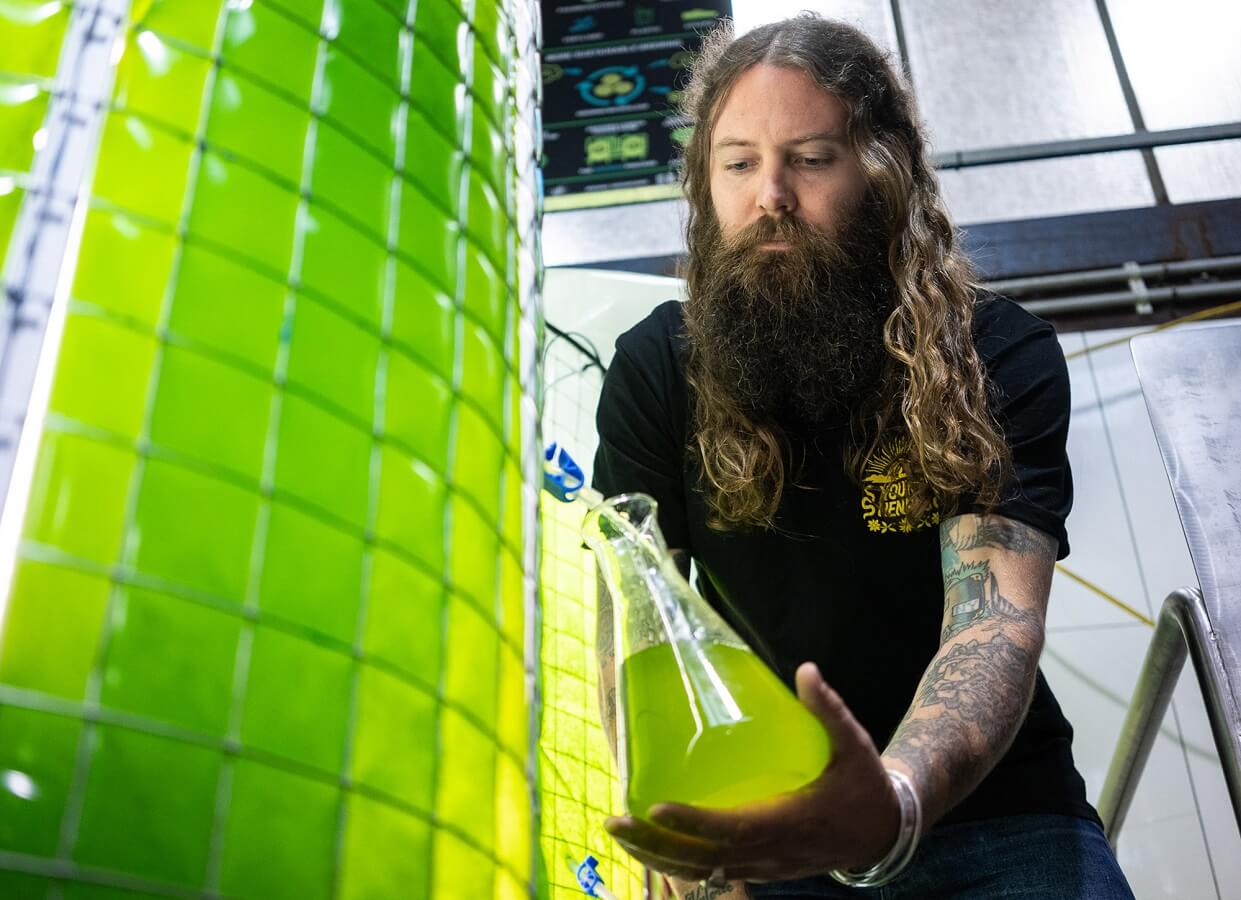Editorial Team

Scientists from the University of Technology Sydney and Australian craft brewery Young Henrys are using algae to reduce the carbon footprint of beer.
Alongside the stainless steel tanks at Young Henrys in the inner-west Sydney suburb of Newtown is another kind of brew – a green-glowing, 400-litre algal bio-reactor. Inside, 20 trillion cells of microalgae are at work absorbing carbon dioxide and producing the same amount of oxygen as a hectare of bushland.
It’s a neat match: while the yeast in the brewing process takes in oxygen and sugar and produces carbon dioxide, the microalgae in the reactor takes in carbon dioxide and produces oxygen and a sugar substrate.
“It’s like we’re installing a mini-forest on the brewery floor,” says Dr Leen Labeeuw, a biotechnologist with the University of Technology Sydney (UTS).
Young Henrys co-founders Oscar McMahon and Richard Adamson say they hope the research project will lead to brewing becoming a carbon-neutral industry, with the technology also adapted to other businesses here and around the world.
“We were inspired by the work UTS was doing and wanted to get involved,” Adamson says. “We thought it would be worth exploring how microalgae could work in a brewing operation to lower our carbon footprint.”
“We’d like to get to the point where we have a carbon catchment system internally and it would basically be a closed loop within the brewery,” McMahon adds. “We’ve still got a fair way to go but once we’ve got it bolted down we definitely would like other breweries to run with it.”
UTS Climate Change Cluster Executive Director Professor Peter Ralph says the work with Young Henrys shows we can address the climate emergency using technology that’s readily available. “Algae offers many solutions,” he says.
UTS is working on a range of uses for algae as a new, sustainable raw material for what are now petroleum-based products. This would have tremendous benefits for people, planet and potentially profit.
Among many other things, algae can produce oil for energy and other products like oil/protein/starch-based bioplastics, along with sugars and other biochemicals for skincare. The protein can also be used for meat alternatives and the oil for an algal-based Omega-3. Microalgae are also an excellent platform for high-value medical compounds and pharmaceuticals.
The challenge – and the opportunity – is achieving the sort of scale and efficiencies needed for viable products and industries. So, alongside the research, UTS is working with entrepreneurs and existing businesses to help them launch or work with algae biotechnologies.
Professor Ralph says there are “massive” market opportunities. “I really believe the potential for algae’s use in a sustainable future is limitless,” he says.
“Algae can play a pivotal role in Australia’s clean energy future as we move away from petroleum-based products. The high-value opportunities in medicine, food and nutraceuticals are exciting and tantalisingly close.”